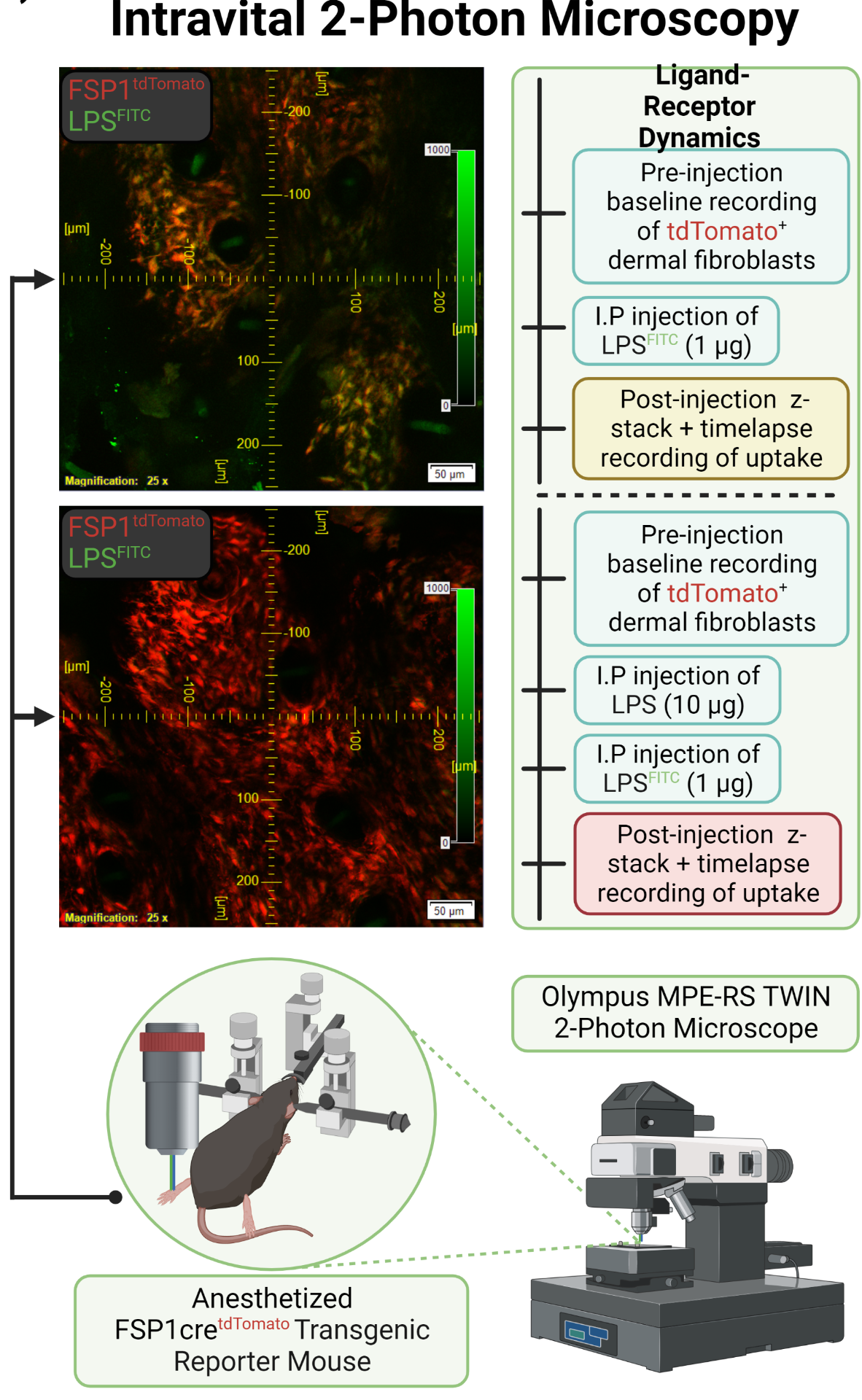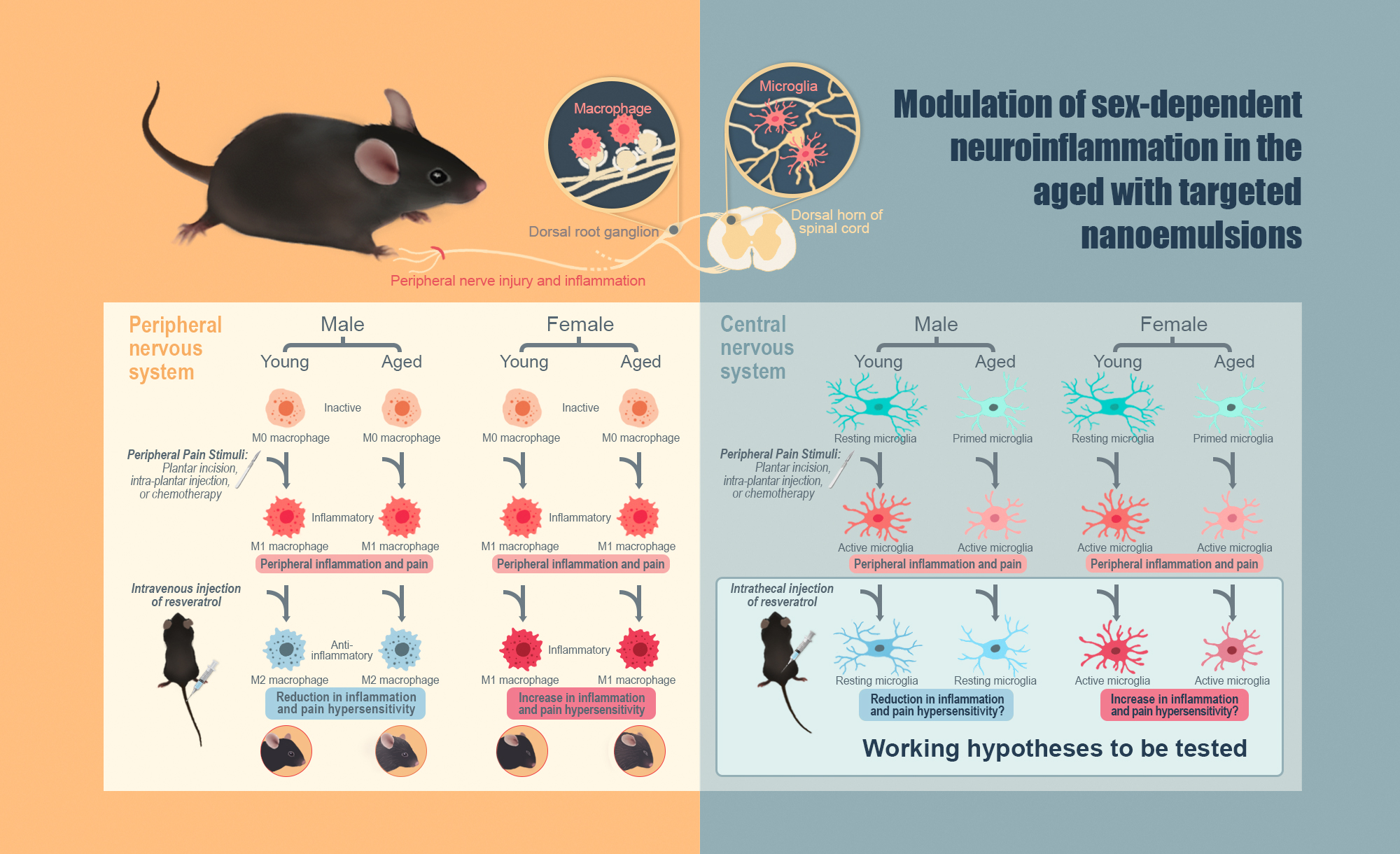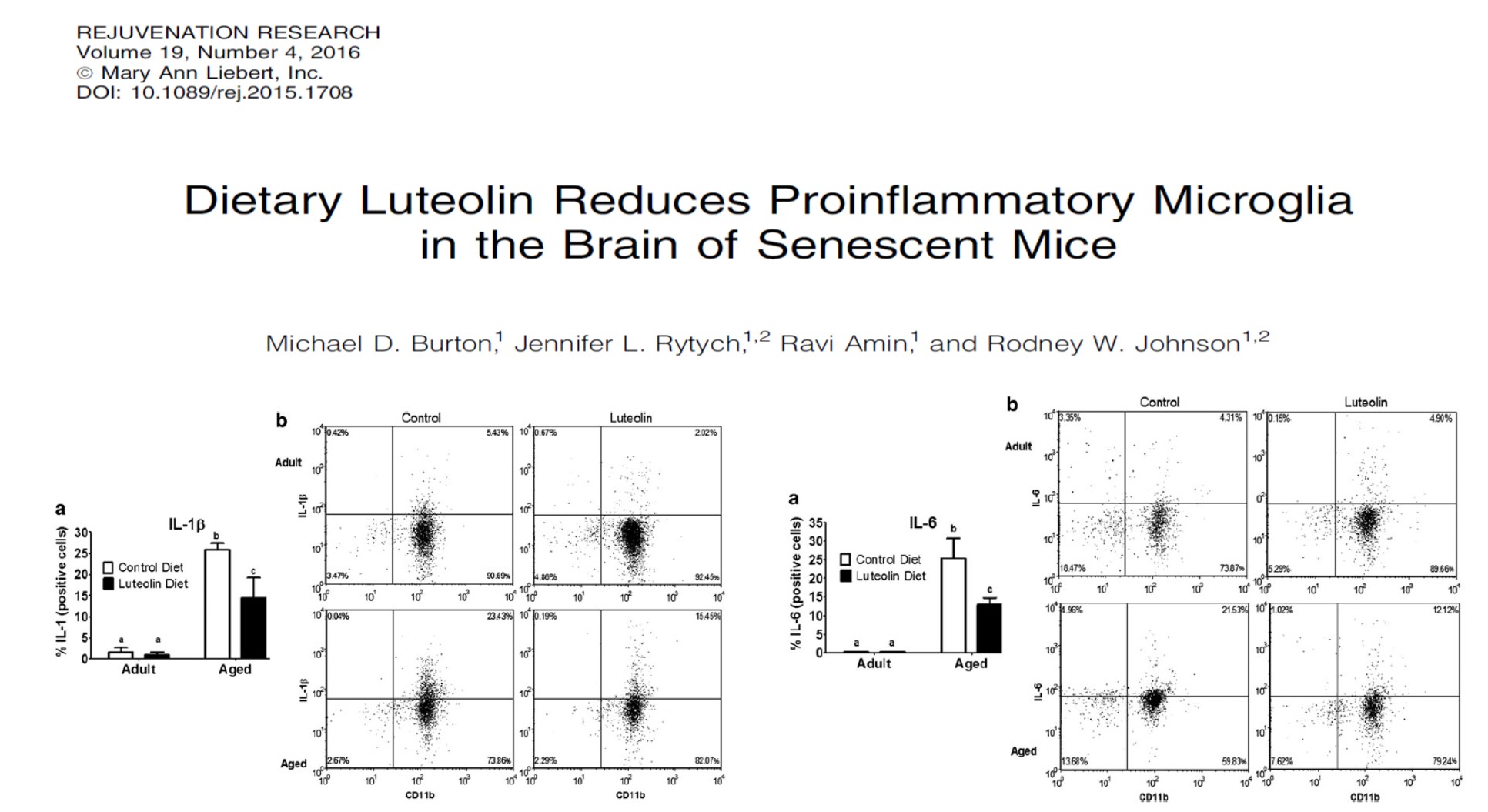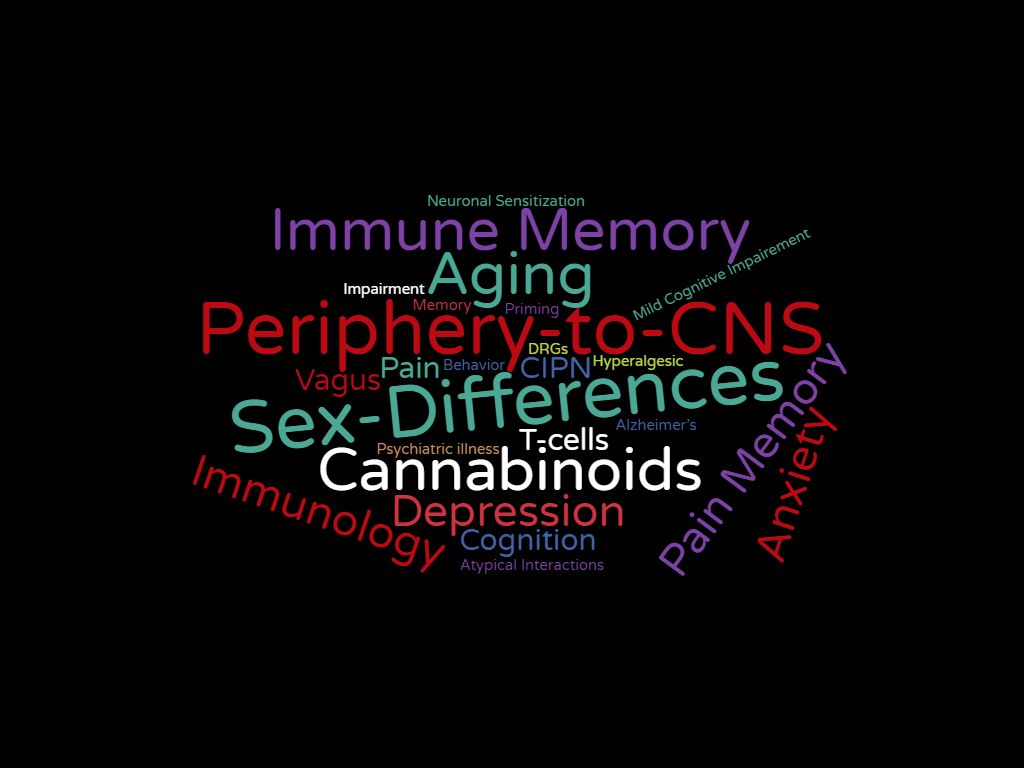Everyone will experience some level of pain throughout their life and at any given time, more than a third of the general population will encounter unbearable pain levels for longer than normal. The neuroimmune mechanisms involved in the induction and persistence of pain have become a major focus of neuroscience research. My laboratory is interested in mechanisms of the diverse pathology of pain (traumatic nerve injury, diabetes, chemotherapy) and how the immune system subjugates the nervous system to mediate the onset and chronicity of these pain states. Our goal is to develop new therapeutics to treat pain, as well as other comorbidities, such as depression brought on by these various pathology. We focus on factors such as diet, alcohol, age, and inflammatory mediators that alter immune and neuronal plasticity. Utilizing techniques in genetics, molecular biology, behavior, imaging, cellular energetics, and pharmacology allows us a unique perspective to approach this problem.
We also use in vivo/intravital imaging and clearing techniques to understand cell-to-cell interactions.
Mechanisms that influence age-related changes in neuroinflammation, microglia activity, Pain, Depression, & Anxiety.
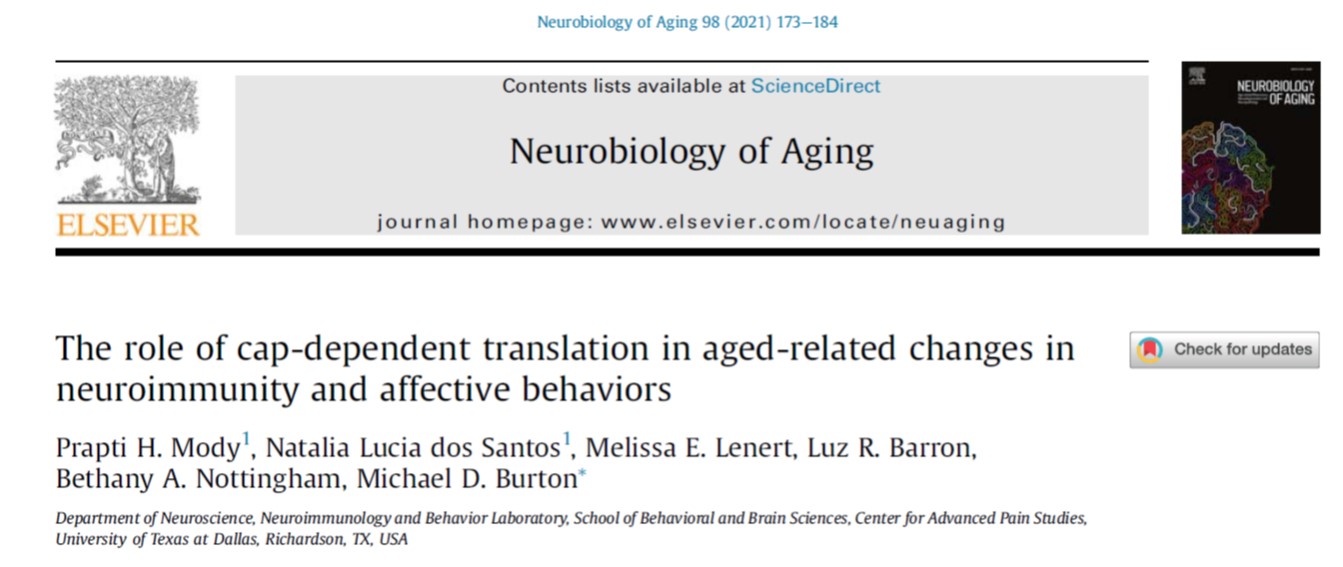
We are also utilize therapeutics to mitigate age-related increases in neuroinflammation

Dr. Burton discusses the conversation between the immune and nervous system.
Check it out on their website, Apple Podcasts, On Spotify, or on Stitcher!
Ep. 14: “Neuroimmunology and Behavior” Featuring Dr. Michael Burton
Funding Sources!



